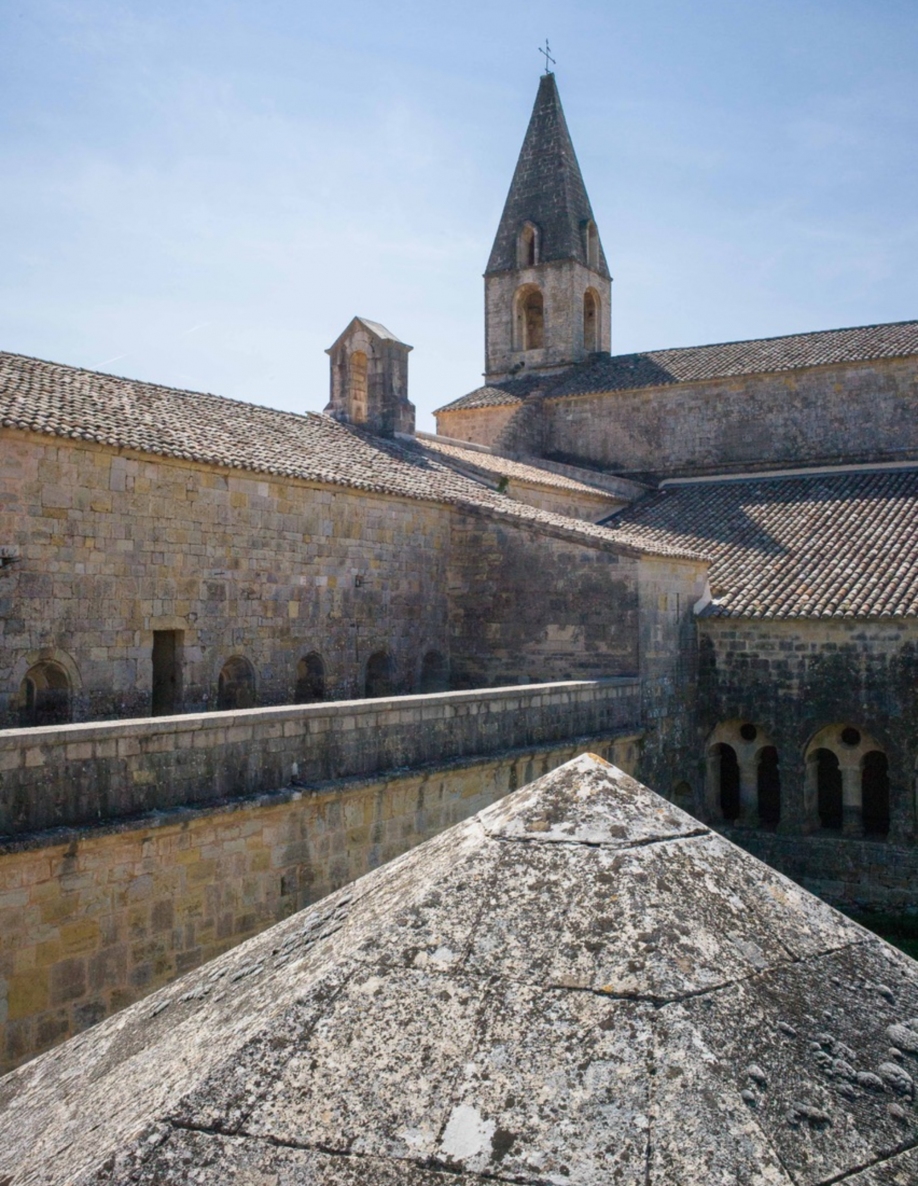The light
Le Thoronet Abbey
© Centre des monuments nationaux
Images © Benjamin Vial
The Thoronet Abbey (France) is a remarkable example and an essential architectural landmark of Cistercian architecture.
Among the Cistercian abbeys that exist throughout Europe, we can see Gothic and Baroque but the current image of Cistercian art favors the architecture and aesthetics of Romanesque abbeys. At the beginning of the 12th century, the Cistercian order, stemming from the monastic revival wanted by Robert de Molesmes, (abbot of Cîteaux), contributed to spreading a type of construction of its own and whose model is the one recommended by one of its most eminent members: Saint Bernard, the Cistercian abbot of Clairvaux. The latter formulates a doctrine of the relationship of art with salvation that will translate into the architecture of monasteries for simplicity. He denounces the abuses which in his eyes endanger the Church and attack everything that appears to be human pride. Saint Bernard maintains a controversy with the Clunians, also born from a renovation of the rule of St. Benedict in the tenth-eleventh centuries. He reproaches them for turning away from the inner life and criticizes their enrichment and their austere art. The church of Fontenay founded in 1118 (Burgundy) faithfully represents the architectural conceptions of the beginnings of the Cistercian order. However, it is in Provence (Le Thoronet, Sénanque and Silvacane) that the churches of the first Cistercian architecture are the most austere, the most humble and characteristic of Bernardine simplicity. This bare architecture will not survive long after the death of St. Bernard (1153). From the second half of the twelfth century, the Cistercian abbeys know the evolution of Romanesque architecture towards Gothic but move away from the Cistercian ideal. Cistercian architecture will find an extension, long after, in the minimalist architecture of the twentieth century.
Many architects will be inspired in their own creations by the architectural repertoire developed by the Cistercians at Thoronet. Their approach will be both ethical and aesthetic and their goal will be to combine simplicity and perfection.


The symbolism of forms and numbers in Roman times
The builders have integrated in the layout of the foundations of the abbey the geometric figures symbolizing the progression of the profane to the sacred circle, triangle, square, rectangle. These figures related to numbers induce a symbolic message, feelings, an atmosphere:
- 1 and the circle: God, heaven, eternity
- 3 and the triangle: the Trinity (the three bays of the apse of the church)
- 4 and the square: the material world (the creation), the 4 elements, the number of seasons, the cardinal points ...
The nave of the church represents on the ground the square of the earth of the men who enter in communion with the half-circle of the world of God (the vault). The church is the image of the heavenly Jerusalem: "new heavens and new earth" whose monks never cease to desire the definitive establishment on the Earth of men.
The oculus of the choir lets in the morning light, that of hope




Romanesque architecture has developed in Europe from the 10th to the 13th century, and was especially rooted in the religious field.
The Cistercians reject wealth and luxury, they advocate an architecture stripped of all superfluity.

The Golden ratio
The church of Thoronet is built on a plan in the shape of a Latin cross, its layout corresponds to the principle of the golden ratio. The latter was one of the builders' ways of expressing their faith in Romanesque times. It served to give harmonious proportions to their constructions. The proportions of the church are at the origin of its exceptional acoustics, this one being particularly favorable to the execution of the Gregorian chant. The golden ratio is a ratio between two dimensions of different sizes. It has a value equal to 1.618 .We find this relationship in nature, in works made by men: monuments, sculptures ... In a church, we find its presence in its plan for example. It is equal to the length/width ratio. The golden rectangle as a module for the construction of the abbey of Thoronet The oculus of the choir lets in the morning light, that of hope.
The number of gold joins the symbolic in that it is related to the proportions that govern the human body. The measurements were taken on the body until the invention of the metric system were proportioned according to the number of gold: bent, foot, span, palm, palm are related to each other according to the number 1,618. This proportion is therefore natural, human. She will finally be described as divine by the monk Luca Pacioli in the sixteenth century. For him, if it is related to man, this proportion comes from the creator and can only be divine.
In these conditions, we are in the presence of a symbolic reality since it links the visible to the invisible, the natural to the divine from the bodily sensibility.

BOOKS
Fernand Pouillon " Les pierres sauvages "
John Pawson " Leçons du Thoronet "